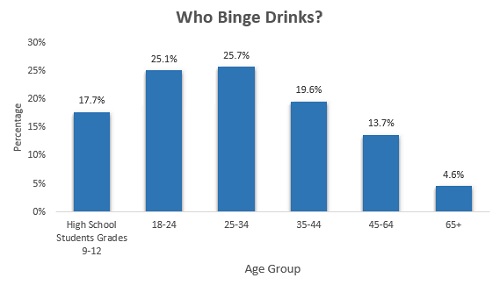 The United States has seen an alarming increase in deaths from liver disease over the past decade, according to a recent study published in BMJ. The spike came as a surprise to researchers, who expected that liver-related deaths would decrease in response to recent improvements in the treatment of hepatitis C. Instead, deaths related to cirrhosis — a disease characterized by scarring of the liver and a gradual decrease in liver function — actually increased by 65 percent between 2009 and 2016. The largest increase — about 10 percent per year — was seen in young people between the ages of 25 and 34. Additionally, whites, Native Americans and Hispanic Americans were more impacted than other ethnic groups.
The United States has seen an alarming increase in deaths from liver disease over the past decade, according to a recent study published in BMJ. The spike came as a surprise to researchers, who expected that liver-related deaths would decrease in response to recent improvements in the treatment of hepatitis C. Instead, deaths related to cirrhosis — a disease characterized by scarring of the liver and a gradual decrease in liver function — actually increased by 65 percent between 2009 and 2016. The largest increase — about 10 percent per year — was seen in young people between the ages of 25 and 34. Additionally, whites, Native Americans and Hispanic Americans were more impacted than other ethnic groups.
Alcohol Use to Blame
Led by a pair of liver specialists from the University of Michigan, Dr. Elliot Tapper and Dr. Neehar Parikh, the study analyzed data on 460,760 deaths from liver disease that occurred between 2009 and 2016. About one-third were due to hepatocellular carcinoma, a form of liver cancer caused by cirrhosis. Men were twice as likely to die from cirrhosis and four times as likely to die from liver cancer as women, the study found.
Cirrhosis of the liver has three main causes: hepatitis C, excessive alcohol consumption, and nonalcoholic fatty liver disease. Most cirrhosis from hepatitis C occurs in older Americans between the ages of 45 and 74, and nonalcoholic fatty liver disease primarily affects middle aged adults and seniors with risk factors such as metabolic syndrome, diabetes and obesity. Thus, the researchers concluded that the driving factor behind the increase in liver disease in young people was drinking too much alcohol. Their conclusion is supported by data that shows a rise in heavy drinking and binge drinking in young Americans since 2002.
Why Millennials Drink Too Much
There is little, if any data, to indicate why alcohol consumption has increased in young people. However, Drs. Tapper and Parikh point to the effects of Great Recession as the likely cause. By the “official” end of the recession (the effects of which are still being felt in many parts of the country today) in 2009, unemployment in America had risen to 10 percent, and nearly 4 million American families had lost their homes. Additionally, the average amount of student loan debt had risen to $24,000, at the same time as millions of young people were unable to find even minimum-wage jobs.

A CDC Fact Sheet shows the prevalence of binge drinking in Millennials
Credit: cdc.gov
What’s more, despite today’s booming economy and an unemployment rate of 3.9 percent, real wages (wages adjusted for inflation) have about the same purchasing power as they did 40 years ago, the Pew Research Center reports. And with rents in many parts of the country skyrocketing, many financially strapped millennials have had no choice but to move back into their parents homes.
The result of all these stressors? A predictable, if lamentable, increase in avoidant, self destructive behaviors like drinking too much.
The Good News
Still, there’s hope in these dismal statistics, Dr. Tapper says, because, unlike other organs, a damaged liver can repair itself. What that means is that if a person can motivate themselves to stop drinking, their liver disease may be cured. “I’ve had patients who came to me in a wheelchair,” Dr.Tapper told NPR. “Three months later, they’re shoveling snow and their lab tests are normal. It’s always because they made that choice to stop drinking,” he said.
Tapper suggests that policymakers might help curb excess drinking by increasing the tax on alcohol, just as many states have done with cigarettes. However, he also stressed that counseling is often necessary to help those who live with substance use disorders to change their behaviors over the long term.
If you or someone you love has a problem with alcohol, mental illness or substance abuse, the call the National Helpline at 1-800-662-HELP (4357). Provided by the Substance Abuse and Mental Health Services Administration (SAMHSA) the hotline offers free, confidential information and treatment referrals 24 hours a day, 365 days a year.

 Deaths from Liver Disease Rising in U.S.
Deaths from Liver Disease Rising in U.S.


 How Dare You Die Now!
How Dare You Die Now!

 “Help Me, Helen”
“Help Me, Helen”














